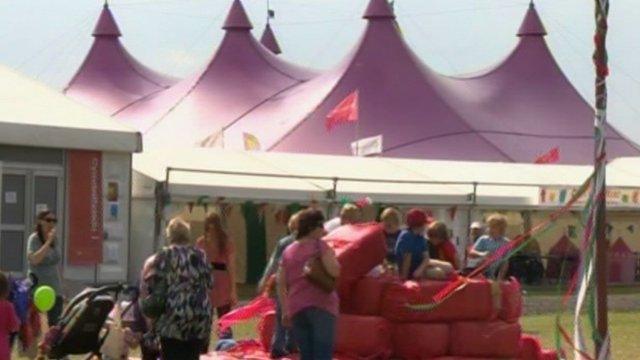Art standards criticised at National Eisteddfod 2013
- Published
The Lle Celf is an open exhibition awarding a gold medal to the best entries each year
Concerns have been raised over the standard of art on show at annual Welsh cultural event the National Eisteddfod.
The exhibition, which attracts 40,000 visitors, gets a share of the £75,000 grant awarded by the Arts Council of Wales (ACW) to the event.
But the minutes of an ACW meeting from October, seen by BBC Wales, said members expressed "disappointment" with last year's exhibition in Denbigh.
Organisers said they had no plans to change the selection process.
The exhibition, Lle Celf, is a big feature of the festival held every August in different parts of Wales.
The ACW minutes show council members believe there needs to be further conversations about "what was being provided in return for the Arts Council's investment".
At a subsequent meeting in December, the ACW asked for the "artistic direction" of the Lle Celf to become a condition of its grant.
'Artistic direction'
Eisteddfod visual arts officer Robyn Tomos said the concerns had not been raised with him, and there were no plans to change the process of selecting entries for Lle Celf.
"I'm not surprised that the members of the council and the officers are discussing the nature and composition of the exhibitions at the Lle Celf, that's to be expected," he said.
"Artistic direction hasn't been something that's been touched upon with the visual arts [at the Eisteddfod].
"As far as the selected exhibition is concerned, it is up to the three independent selectors. There haven't been any themes or categories since 1992, for over 20 years," he said.
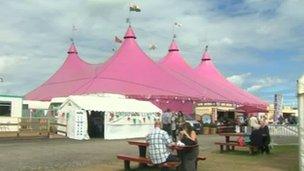
The pink pavilion is a big feature on the eisteddfod site and is used as the main performance venue
Asked if there were any plans to change the Lle Celf in future, Mr Tomos said: "We look at it every year, it's in continual flux."
The eisteddfod receives a grant of £75,000 from ACW which is used to pay for marketing and live guides around the festival site, as well as the costs of moving and installing art works.
It also pays for ACW's presence at the Lle Celf during the week-long festival.
ACW arts director David Alston said the standard of last year's exhibition prompted a discussion among council members.
Lle Celf receives a proportion of the £75,000 grant that the arts council gives the eisteddfod
"There's always debate about the exhibition and it's not surprising that within council there was a lively debate about the nature of the work," he said.
"This exhibition has a very large public and it has a public that is not necessarily a gallery-going public.
"So it's a really important encounter between the public and art, and we value it as that. So there's high stakes for the week of the exhibition."
Mr Alston said he personally welcomed the selection of younger artists for last year's exhibition but said that others felt there should be a greater representation of artists whose careers had matured.
He said: "I think there was a feeling that this was somehow a more superficial exhibition, that it didn't engage as much as maybe previous ones, but there'll always be talk about the nature of the exhibition that emerges."
Elfyn Lewis, who won the gold medal for fine art when his work was selected for the Lle Celf in 2009, said: "Some years are better than others and maybe that's what this is about.
"I didn't think it was that bad [last year]. It's just somebody's point of view and I disagree with it," said Mr Lewis, who has been putting work forward for consideration for the event for 20 years.
"I think quality comes to the top whatever your age.
"It's good that it's an open competition because anyone can try."
The eisteddfod has been gathering opinions about the Lle Celf in recent months with the intention of publishing a five-year plan that will steer its visual arts work over the next few years.
- Published30 January 2014
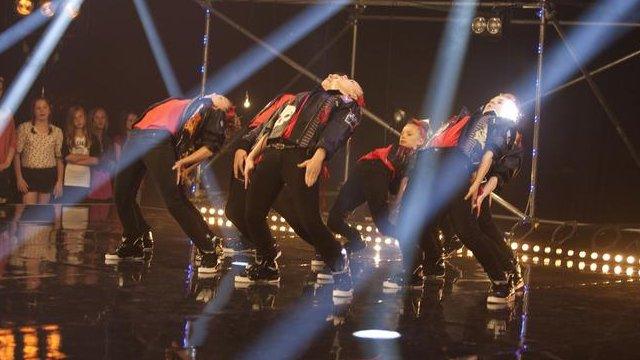
- Published7 January 2014
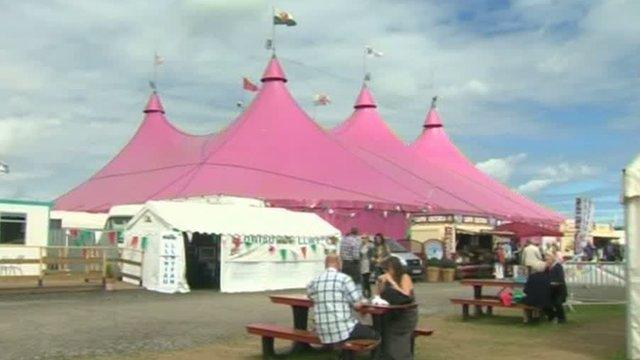
- Published3 December 2013
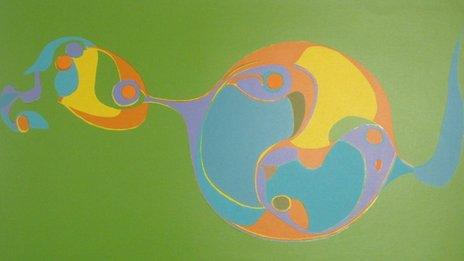
- Published23 November 2013
